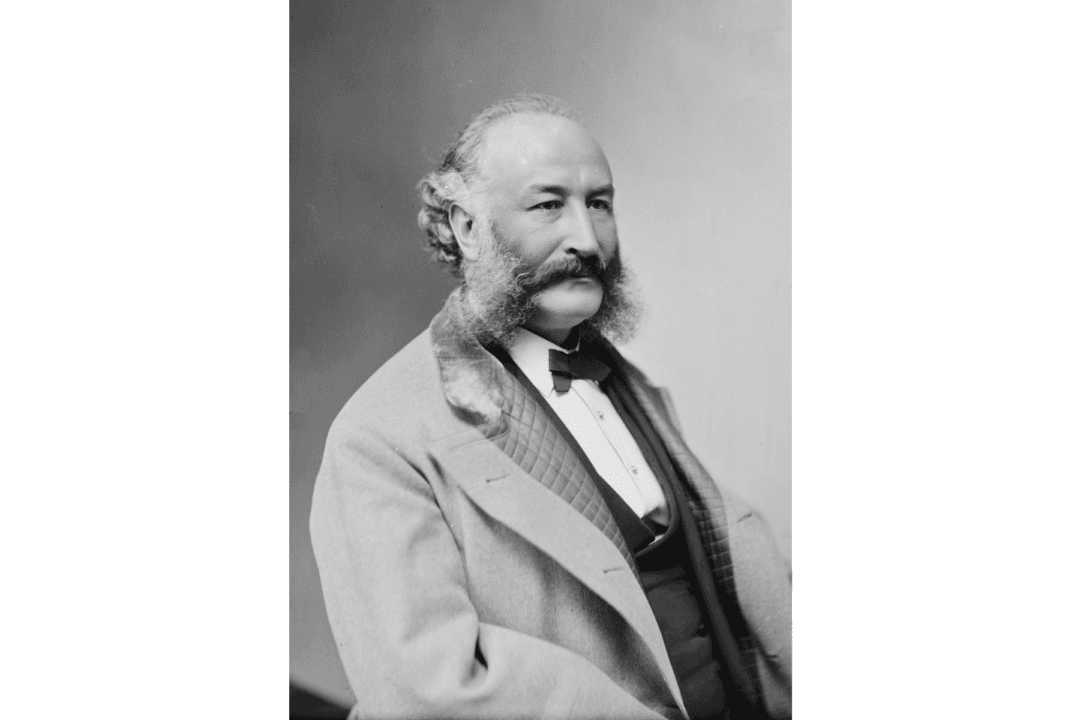Inside the stunningly ornate Biltmore Hotel in New York City sat Secretary of State Robert Lansing and Danish Chargé d’Affaires Constantin Brun. The purpose of this Aug. 4, 1916 meeting was to sign a treaty “providing for the cession to the United States of all territory asserted or claimed by Denmark in the West Indies, including the islands of St. Thomas, St. John and St. Croix, together with the adjacent islands and rocks.” Signing the treaty felt more like a formality than a conclusion of negotiations. The two nations had been at this stage several times before with nothing to show for their efforts.
Furthermore, the Danes were losing their grip as a global power, as European nations pushed and prodded their way to dominance. The Napoleonic Wars witnessed the rise and fall of France, but also the devastation of neighboring countries.
The Schleswig Wars

In the spring of 1848, when Danish nationalists wished to incorporate the region of Schleswig into the Kingdom of Denmark, which would have detached it from Holstein, protests by the German majority of the Schleswig-Holstein duchies erupted. The uprising resulted in the First Schleswig War from 1848 to 1851, which witnessed conflict between the Danes and the Prussians. It also witnessed the creation of two constitutions: one for the Kingdom of Denmark and one for Schleswig-Holstein. Although the Danes won the war, the conflict between the Danish-Schleswig and Schleswig-Holstein factions was far from over.
Representatives from Great Britain, Russia, France, Austria, Prussia, Sweden and Norway, and Denmark gathered in London to establish a new agreement about the duchies. The London Protocol of 1852 was signed, which, among other things, assured the duchies would not become part of Denmark. One major problem with this agreement was that neither the assemblies of Schleswig or Holstein, nor the German Confederation were consulted on the matter.
In 1863, conflict erupted again when Danish King Frederick VII announced a new shared constitution between Denmark and the duchies. Two days later, the king fell ill and died, leaving his successor, Christian IX to sign the constitution.
Seward’s Expansion
Of course, at this same time, America was experiencing its own violent convulsions. The American Civil War had erupted in April 1861, and by the time Danes, Prussians, and Austrians were signing their treaty in Vienna, the war between the states was coming to a close.
The necessity for a naval harbor in the West Indies became evident during the Civil War. In January 1865, a few months before the Confederates surrendered at Appomattox, Seward contacted the Danish minister to the U.S. Gen. W.R. Raasloff, inquiring about the islands. St. Thomas was the crown jewel of the islands, perfectly situated in the Caribbean and fronting the entrance to the Pacific Ocean. The island also possessed an ideal natural harbor.
The First Treaty
In October 1867, Denmark and the United States had finally come to an agreement. America would pay Denmark $7.5 million in gold coins for the islands of St. Thomas and St. John. Island inhabitants could choose to become U.S. citizens or remain Danish citizens. When a plebiscite was conducted on the islands, the islanders approved the sale 1,244 to 22. All that was needed was for the Danish Landsting (comparative to the U.S. Senate) and the U.S. Senate to ratify the treaty. The Landsting ratified the treaty, and, on Nov. 27, 1867, King Christian IX announced the sale. The announcement was premature.Growing Concerns
A few months later, the Franco-Prussian War began. With its end, the German Confederation gained more land, specifically Alsace-Lorraine, and ultimately formed into the German Empire. Germany was growing, and it wasn’t simply the Europeans who were concerned. The Americans feared that the Germans might be looking to the West Indies. For a brief period in the mid-1880s, the Germans began eyeing the Caribbean, specifically St. Thomas.The Danes broached the subject of the islands to Secretary of State James G. Blaine. After Blaine’s resignation in 1892 and the appointment of John W. Foster, who served the final eight months of President Benjamin Harrison’s administration, discussions furthered, but nothing came of them.
Lodge’s Report, Hay’s Attempt
On Feb. 15, 1898, the USS Maine exploded in Havana Harbor, ultimately leading to the Spanish-American War from April to December. On March 31, however, Sen. Henry Cabot Lodge issued a report to the Foreign Relations Committee regarding the Danish West Indies.“So long as these islands are in the market there is always the danger that some European power may purchase, or try to purchase, them,” Lodge noted in his report. “This would be an infraction of the Monroe doctrine, and would at once involve the United States in a very serious difficulty with the European power which sought possession of the islands. In the interest of peace, it is of great importance that these islands should pass into the hands of the United States and cease to be a possible source of foreign complications, which might easily lead to war. From a military point of view the value of these islands to the United States can hardly be overestimated.”
Negotiations soon began again in 1900 and lasted two years. On Jan. 24, 1902, Secretary of State John Hay and Brun signed the treaty, which would cede St. Thomas, St. John, and St. Croix to the United States for $5 million. The treaty was ratified by the Senate and the president on Feb. 17 and March 1, respectively. This time, however, it was the Danish Landsting, which chose not to ratify.

Third Time’s the Charm
It seemed as though America would never gain the Danish West Indies. When Europe erupted in war around the same time the Panama Canal opened, the global conflict brought the threat of European powers “of the first order” even closer to home. Germany was again seeking to extend its empire, and its unrestricted submarine warfare proved that the Monroe Doctrine was not enough to deter it.Fearing the German annexation of Denmark, and therefore the Danish West Indies, President Woodrow Wilson and Secretary of State Robert Lansing believed it imperative to obtain the islands. By the time Lansing inquired in 1915 about purchasing the islands, Danish attitudes had changed. Brun rejected Lansing’s proposal, and it appeared the Danes in general were against the acquisition. Brun countered Lansing, suggesting that any treaty would require a local plebiscite, automatic U.S. citizenship for the inhabitants, and free trade between the islands and the United States.
Lansing made the ultimate counterproposal: Considering the European conditions and the growing threat of the German Empire, the Americans might be forced to occupy the islands outright due to national security concerns.
On Aug. 4, 1916, Lansing and Brun, seated together in the Biltmore Hotel, signed the treaty. But Lansing understood, as had many other secretaries of state before him, that this was merely the first of numerous necessary steps.
This time, however, was different. The Senate ratified the treaty on Sept. 7, followed by the Danes on Dec. 22. Wilson ratified the treaty on Jan. 16, 1917. There was one more step left before the islands were ceded. America had to pay the agreed $25 million.

It was during this week in history, on March 31, 1917, that the United States paid Denmark $25 million in gold coin, and Denmark officially ceded to the United States “all territory asserted or claimed by Denmark in the West Indies, including the islands of St. Thomas, St. John and St. Croix, together with the adjacent islands and rocks.” The Danish West Indies had now become the Virgin Islands.









